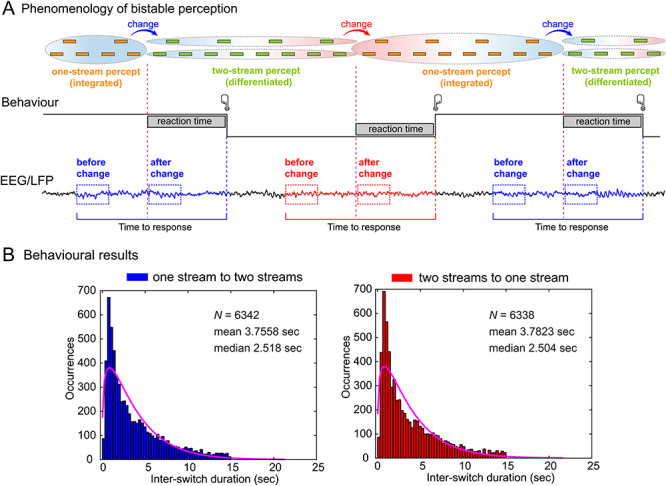Figure 1.

Experimental design and analysis of ongoing brain activity. (A) Top row: Phenomenology (reported experience) during auditory bistability. Participants listened to a series of tones of two different frequencies separated by a temporal gap (see Materials and Methods). Tones are experienced either as one stream (phenomenologically integrated percept; orange blocks surrounded by one ellipse) or as two streams (phenomenologically differentiated percept; green blocks surrounded by two ellipses). Perceptual transitions occur either in the one-stream to two-stream direction (blue arrows and blue background) or in the two-stream to one-stream direction (red arrow and red background). Middle row: Behavioral responses during the task. Participants pressed one button when perceiving that one-stream had fully changed into the two-stream percept (blue button) and another button when perceiving that two-stream had fully changed into the one-stream percept (red button). Bottom row: Dynamical analyses and windows of interest for EEG and iEEG signal analyses. Ongoing activity in during both transitions was calculated using a sliding window procedure over a fixed time window locked to the onset of the button press. Window size was calculated based on the mean RTs in the exogenous condition (1342 ms), and the minimum duration between responses that guaranteed no overlap between epochs (2500 ms; see Materials and Methods). (B) ISD histograms for the one- to two-stream perceptual stable period (left panel) and for the two- to one-stream perceptual stable period (right panel).
